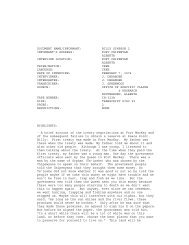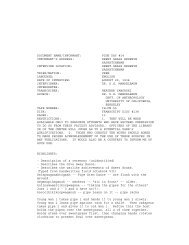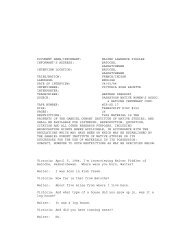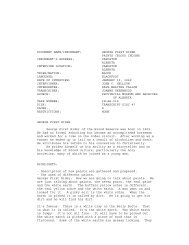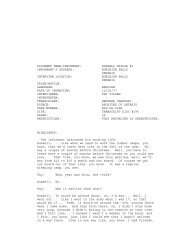Contents of It's not All in Your Head by Asmundson and Taylor
Contents of It's not All in Your Head by Asmundson and Taylor
Contents of It's not All in Your Head by Asmundson and Taylor
Create successful ePaper yourself
Turn your PDF publications into a flip-book with our unique Google optimized e-Paper software.
identification <strong>and</strong> reattribution <strong>of</strong> dysfunctional assumptions, <strong>and</strong> relapse prevention<br />
(Warwick & Salkovskis, 2001).<br />
CBT treatments for health anxiety <strong>in</strong>clude behavioural therapies that help clients<br />
to identify maladaptive behaviours <strong>and</strong> replace them with healthy <strong>and</strong> adaptive ones<br />
(Furer & Walker, 2005). The behavioural components <strong>of</strong> CBT <strong>in</strong>volve techniques such as<br />
<strong>in</strong> vivo exposure, systematic desensitization, <strong>and</strong> ERP that are effective for chang<strong>in</strong>g<br />
maladaptive behaviours (Bouman & Visser, 1998). There is ample evidence that exposure<br />
to feared stimuli can reduce anxiety (Furer & Walker, 2005). In the treatment <strong>of</strong> health<br />
anxiety, <strong>in</strong>dividuals are exposed to various disease- <strong>and</strong> death-related stimuli <strong>and</strong> various<br />
somatic sensations. Behavioural experiments are used to establish that some feared<br />
catastrophe will <strong>not</strong> happen <strong>and</strong> to underst<strong>and</strong> the importance <strong>of</strong> ma<strong>in</strong>ta<strong>in</strong><strong>in</strong>g factors <strong>and</strong><br />
negative th<strong>in</strong>k<strong>in</strong>g identified dur<strong>in</strong>g assessment (Warwick & Salkovskis, 2001). They are<br />
also used to test alternative strategies <strong>and</strong> distorted beliefs about health <strong>and</strong> disease<br />
(Warwick & Salkovskis, 2001).<br />
Psychoeducation is an <strong>in</strong>tegral part <strong>of</strong> CBT <strong>in</strong> that it provides <strong>in</strong>formation to<br />
people that challenge their irrational beliefs <strong>and</strong> faulty knowledge. Psychoeducation is<br />
―the provision <strong>of</strong> <strong>in</strong>formation about the client‘s disorder <strong>and</strong> its treatment, presented<br />
clearly <strong>in</strong> verbal, written, or video formats‖ (<strong>Asmundson</strong> & <strong>Taylor</strong>, 2004, p. 69).<br />
Psychoeducation may <strong>in</strong>clude lectures, demonstrations, focused group discussions, brief<br />
exercises, <strong>and</strong> optional homework assignments (<strong>Taylor</strong> et al., 2005). This method <strong>of</strong><br />
18



